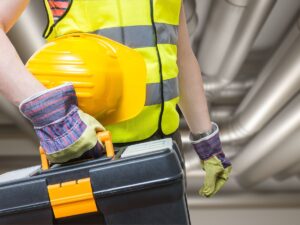Climate Change Activism Starts at Home

“Global warming activism isn’t just for the young. The elderly want to help out too, says Paula Span.” (The Independent) As “three-quarters of adults in Great Britain worry about climate change…and are more likely to make lifestyle changes in response.” (ONS Opinions and Lifestyle Survey) As they are concerned for their families and future generations, yet feel helpless as eco-friendly changes have seemed daunting and expensive.
However, this has shifted in recent years as the design world is responding to the need for sustainability. There have been significant changes in the world of bathrooms, with many eco-friendly fixtures and fittings hitting the market.
So, it’s understandable to feel overwhelmed by the world’s energy problems and think ‘what can I do?’. Yet, incremental household changes can be impactful and adapting your bathroom is a good starting point.
Sustainable Bathroom Adaptions
Therefore, the experts at Premier Care in Bathing have recommended a variety of inexpensive and easy ways to help move towards a sustainable bathroom.
1. Aerating shower head
One way to keep your showers at an eco-friendly level is to install an aerating shower head. These work by mixing water with air, restricting the water flow while still delivering the pressure of a power shower.
2. Cut water consumption
Dual flush toilets
Switching to a dual-flush design can give you the option of a half flush, which significantly cuts out a whole lot of unnecessary water usage.
Automatic taps
Turn off the taps when you’re brushing your teeth. You can take this one step further by installing automatic taps, also called sensor taps which have a low-flow rate.
Cistern displacement devices
A cistern displacement device (CDD) can displace around one litre of water every time you flush. That can produce savings of up to 5,000 litres of water a year. What’s more, most water companies provide them for free.
Dripping taps
A dripping tap could waste up to 5,500 litres of water a year. The most common cause of a dripping tap is a washer that needs replacing, which is something that you can easily do yourself.
3. Buy British
Buy your fixtures, fittings and furniture as locally as possible. Checking where bathroom products have been produced will help to reduce our reliance on polluting lorries, container ships and air freight and allow local businesses to thrive.
4. Source reclaimed materials
Consider using reclaimed sanitary ware or repurpose furniture rather than buying brand new. Salvage yards can be a great source of timber beams, stone, handmade tiles and so on. As well as specialist suppliers who sell fully restored items such as vintage sinks, Victorian baths and reclaimed wood flooring.
5. Energy-saving light bulbs
LED light bulbs use 90% less energy, making them far more cost-effective than the conventional bulbs in your home.
6. Zero-waste hygiene products
Simple changes, such as buying bamboo toothbrushes, switching to shampoo bars and choosing zero-waste cleaning products, could drastically reduce the amount of plastic we pile on the environment.
7. Low chemical compound paint
Most household paints contain VOCs (Volatile Organic Compounds), which are harmful to our health but also contribute to global warming. VOCs can also be given off for years after the paint has dried. Choosing to use low VOC paint has become an easy option thanks to legislation that has come into force regulating the use of these chemicals in paint.





